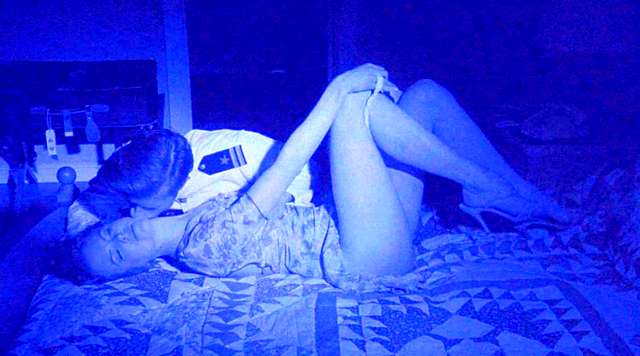A bit of context, The Seafarers is a commissioned thirty-minute
promotional industrial film for the Seafarers International Union, written by Will
Chasan, and is filmed at the offices at the Atlantic and Gulf Coast District of
the American Federation of Labor. It is generally seen as a minor work in
Kubrick’s career (if it is even known), but, as Vincent LoBrutto writes, it is actually note-worthy. "In
tone the project was an extension of the positive-spin material he had done for
Look magazine," writes LoBrutto, but "if The Seafarers had been directed by any of the hundred of
professionals working on these meat-and-potatoes films, it would probably be of
little note to film history. But the short subject as directed contains the DNA
to identify it as a Stanley Kubrick film." What exactly does this mean?
In The Seafarers Kubrick creates some very striking images. There are
scenes of groups of men in high activity and at rest, a striking close-up of a photograph
of a naked young woman in a barbershop, a bravura long-take in the cafeteria
etc. The themes that emerge here are the conflict between humanity and
technology, and self-interest against collective good. Kubrick even has a way
to undermine the purely promotional value of the film through its subjects and
editing. There is a reason why in Full Metal
Jacket Joker plays a marine photographer! Something happened on this ship
that Kubrick is trying to highlight. I suspect, if Laurent Vachaud’s brilliant thesis
that Eyes Wide Shut is a critique of
the Illuminati is correct - through its compassion towards the couple’s
daughter (which he suggest might get abducted at the end) - then The Seafarers anticipates the marine
that Alice Harford (Nicole Kidman) fantasizes about. Could all this be a
reference to L. Ron Hubbard? What exactly happened on the ship? Not to get all The Crying of Lot 49 about this, but if
one scrutinizes beyond the surfaces, there are also many connections between The Seafarers and other films like,
say, the war-time USS Ship reference in Steven Spielberg’s Jaws or even the more direct critique of scientology in Paul Thomas
Anderson’s The Master.
And water actually plays an important role in
Kubrick’s cinema. The Sterling Hayden general of Dr. Strangelove worries that the
Russians are going to contaminate the American drinking water supplies and Jack
Torrance gets frozen, stuck in ice, at the end The Shining. Take this as one Kubrick’s most devastating warnings: Watch
out for the water and seas! Who knows what’s going there!

No comments:
Post a Comment